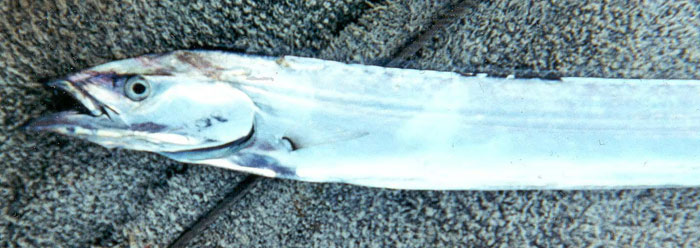Biologists recently analyzed special proteins in fish eyes that capture light photons, making vision possible. By comparing the sequences of a critical protein from different fish, they identified a particular alteration that likely occurred somewhere along the line of this fish’s ancestry. The altered protein resulted in the fish seeing visible light instead of ultraviolet rays, or UV. How relevant to big-picture evolution is this find?
Emory University evolutionary biologist Shozo Yokoyama admitted in a university press release, “Evolutionary biology is filled with arguments that are misleading, at best….To make a strong case for the mechanisms of natural selection, you have to connect changes in specific molecules with changes in phenotypes, and then you have to connect these changes to the living environment.”1 Yokoyama was lead researcher in the study, published in the Proceedings of the National Academy of Sciences, which attempted to determine specific details on what are interpreted as evolutionary changes in the vision system of vertebrate eyes.
Yokoyama and his colleagues found that the difference between fish that see UV and those that see in violet―a lower intensity wavelength―was due to the removal of a particular amino acid from the 86th position in the protein. This single amino acid deletion caused the protein’s shape to alter very slightly. That subtle adjustment resulted in the molecule being “tuned” to receive violet light instead of UV.
The report also included sequence comparisons with the same critical eye protein in land mammals. The researchers reported, “In the absence of UV light, UV vision becomes unnecessary and is expected to disappear, as exemplified by coelacanth and many nocturnal mammals.”2 Indeed, in the absence of any light, any vision becomes unnecessary and is expected to disappear, as has occurred in the Texas Blind Salamander living in the San Marcos Pool.
The expectation of a loss of function follows from the creation model, which holds that creatures were originally designed with the highest levels of genetic organization and have been gradually losing information since.3
Big-picture evolution, in stark contrast, must explain how all of the parts required for vision entered the world naturally.4 This fish eye research, an endeavor to investigate evolutionary development, merely highlighted a loss of function due to the deletion of a small part of a protein. As such, it has nothing to do with wholesale gain of the type of new genetic information necessary to build a fish from a single-celled ancestor, as the evolutionary tale requires.
Thus, the changes that occurred in these fish eyes point to the corruption that entered the world with humanity’s rebellion against God, resulting in the situation observed today in which “the whole creation groaneth and travaileth in pain together until now.”5
References
- Fish Vision Discovery Makes Waves in Natural Selection. Emory University press release, October 16, 2009.
- Tada, T., A. Altun and S.Yokoyama. 2009. Evolutionary replacement of UV vision by violet vision in fish. Proceedings of the National Academy of Sciences. 106 (41): 17457.
- Maddox, B. 2007. Mutations: The Raw Material for Evolution? Acts & Facts. 36: 9.
- Thomas, B. Retinal Coordination: Picture Perfect Presentation of Design. ICR News. Posted on icr.org April 15, 2009, accessed October 20, 2009.
- Romans 8:22.
Image Credit: NOAA
* Mr. Thomas is Science Writer at the Institute for Creation Research.
Article posted on October 27, 2009.




